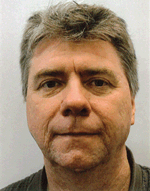Determining the impacts of coal seam gas extraction on water resources and water-dependent assets
D. A. Post A C and P. A. Baker BA CSIRO Land & Water, GPO Box 1700, Canberra, ACT 2601, Australia.
B Department of the Environment and Energy, Australian Government, GPO Box 787, Canberra, ACT 2601, Australia.
C Corresponding author. Email: david.post@csiro.au
The APPEA Journal 57(2) 519-522 https://doi.org/10.1071/AJ16194
Accepted: 10 March 2017 Published: 29 May 2017
Abstract
As recently as two years ago, there were numerous proposals to develop coal seam gas projects across eastern Australia. Today the picture is very different. While significant coal seam gas development has occurred in the Surat Basin, Metgasco has surrendered their licences and AGL have indicated that they will not proceed in Gloucester. The only coal seam gas development that is still proceeding in NSW is Santos’s proposal in the Liverpool Plains (Namoi). However, recent developments in Australian Government policy to increase gas supply on the eastern seaboard means that the results of these assessments will inform future decisions.
Research carried out as part of the Bioregional Assessment Programme (BAP) has shown some surprising results in the Richmond River (Clarence-Moreton bioregion) regarding the potential impacts of coal seam gas development on the water resources and water-dependent assets of that region.
This study will show how we developed a groundwater and surface water cumulative impact model in the Clarence-Moreton bioregion, and present the key findings from that modelling. Similar cumulative impact assessments are currently underway in the Maranoa-Balonne-Condamine, Gloucester, Hunter, Galilee, and Namoi regions and we expect these to be published by late 2017.
As part of a core tenet of transparency in the BAP, the data collected and models developed as part of these assessments will be freely available for Industry proponents, State regulators and other interested parties to access and utilise.
The Surat cumulative management area in south-eastern Queensland has provided a structure for developing coal seam gas resources while protecting water resources via a cumulative approach to management. We propose that the models we have developed would provide the basis of a similar structure to assess and manage cumulative impacts in regions across Australia that may see coal seam gas or other forms of unconventional gas development.

Dr David Post has been a research scientist with CSIRO since 1999 and his research interests focus broadly on the impacts of landuse and climate change on water resources, as well as on the regionalisation of hydrologic response to ungauged areas. He has a PhD in Resource Management from the Australian National University and is President of the Modelling and Simulation Society of Australia and New Zealand (MSSANZ). Currently he is the Projects Director of the Bioregional Assessment Programme. |

Peter Baker is currently a Senior Principal Research Scientist (Geoscience) for the Office of Water Science inside the Australian Government Department of the Environment and Energy. He spent nearly two decades working for several petroleum companies throughout Australia. After leaving the petroleum industry, Peter spent over 10 years working on a variety of natural resource management issues, including the development of the National Water Initiative, and since 2010 on coal seam gas developments. Peter is a regular presenter at national conferences and is a member of several national committees dealing with water resource issues. |


